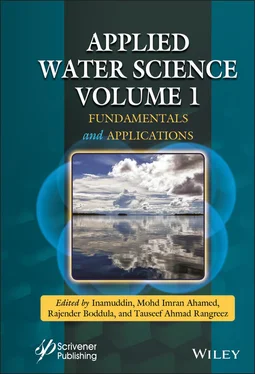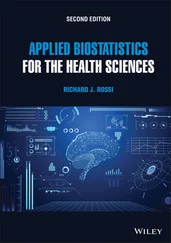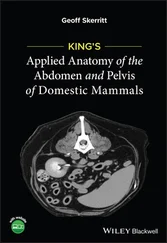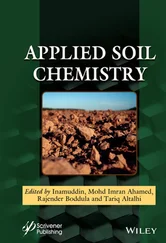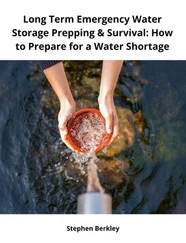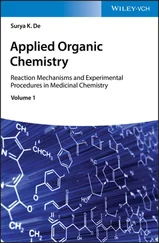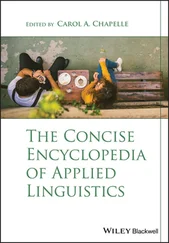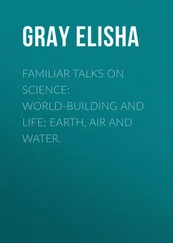Wiley Global Headquarters
111 River Street, Hoboken, NJ 07030, USA
For details of our global editorial offices, customer services, and more information about Wiley products visit us at www.wiley.com.
Limit of Liability/Disclaimer of Warranty
While the publisher and authors have used their best efforts in preparing this work, they make no representations or warranties with respect to the accuracy or completeness of the contents of this work and specifically disclaim all warranties, including without limitation any implied warranties of merchantability or fitness for a particular purpose. No warranty may be created or extended by sales representatives, written sales materials, or promotional statements for this work. The fact that an organization, website, or product is referred to in this work as a citation and/or potential source of further information does not mean that the publisher and authors endorse the information or services the organization, website, or product may provide or recommendations it may make. This work is sold with the understanding that the publisher is not engaged in rendering professional services. The advice and strategies contained herein may not be suitable for your situation. You should consult with a specialist where appropriate. Neither the publisher nor authors shall be liable for any loss of profit or any other commercial damages, including but not limited to special, incidental, consequential, or other damages. Further, readers should be aware that websites listed in this work may have changed or disappeared between when this work was written and when it is read.
Library of Congress Cataloging-in-Publication Data
ISBN 978-1-119-72476-6
Cover image: Pixabay.com
Cover design by Russell Richardson
Set in size of 11pt and Minion Pro by Manila Typesetting Company, Makati, Philippines
Printed in the USA
10 9 8 7 6 5 4 3 2 1
Preface
Applied Water Science I-Fundamentals and Applications
Inamuddin1, Mohd Imran Ahamed2, Rajender Boddula 3 and Tauseef Ahmad Rangreez 4
1Department of Applied Chemistry, Zakir Husain College of Engineering and Technology, Faculty of Engineering and Technology, Aligarh Muslim University, Aligarh, India
2Department of Chemistry, Faculty of Science, Aligarh Muslim University, Aligarh, India
3CAS Key Laboratory of Nanosystem and Hierarchical Fabrication, National Center for Nanoscience and Technology, Beijing, China
4Department of Chemistry, National Institute of Technology, Srinagar, Jammu and Kashmir, India
Water is one of the precious and basic needs of life for all living beings and is a precious national asset. Without it, the existence of life cannot be imagined. Availability of pure water is decreasing day by day, and water scarcity has become a major problem that is faced by our society for the past few years. Hence, it is essential to find and disseminate the key solutions for water quality and scarcity issues. The inaccessibility and poor water quality continue to pose a major threat to human health worldwide. Around billions of people lacking to access drinkable water. The water contains the pathogenic impurities, which are responsible for water-borne diseases. The concept of water quality mainly depends on the chemical, physical, biological, and radiological measurement standards to evaluate the water quality and determine the concentration of all components and then to compare the results of this concentration with the purpose for which this water is used. Therefore, awareness and a firm grounding in water science are the primary needs of readers, professionals, and researchers working in this research area.
This book explores the basic concepts and applications of water science. It provides an in-depth look at water pollutants’ classification, water recycling, qualitative and quantitative analysis, and efficient wastewater treatment methodologies. It also provides occurrence, human health risk assessment, strategies for removal of radionuclides, and pharmaceuticals in aquatic systems. The book chapters are written by leading researchers throughout the world. This book is an invaluable guide to students, professors, scientists, and R&D industrial specialists working in the field of environmental science, geoscience, water science, physics, and chemistry.
Chapter 1provides a general overview of different analytical methodologies that have been proposed for the analysis of phthalic acid esters in water samples. Special attention has been given to methods based on the application of sorbent-based microextraction techniques (i.e., solid-phase microextraction and micro solid-phase extraction magnetized or not, among others).
Chapter 2discusses the occurrence, dissemination, and behavior of pharmaceuticals in aquatic environments. Human exposure pathways and health risks, including the emergence of antimicrobial resistance are summarized. Risk factors promoting human exposure in developing countries are discussed. Methods for removal of pharmaceuticals and future research directions are also highlighted.
Chapter 3focuses on the latest developments in the methods for the oil/water separation through filtration of the membrane using distinct materials with surface properties that are super wetting.
Chapter 4presents the fundamental studies on the interdisciplinary issue of microplastic-based pollution of water environments; the scientific approach and roadmap to this complex problem are discussed.
Chapter 5summarizes the routes of formation of organic and inorganic chloramines upon chlorination disinfection. Chloramine’s possible health risks to humans including mutagenicity and hemolytic anemia are discussed. Further, the analytical methods for their control in aqueous environments are summarized. Selective methods including chromatographic and pH-controlled colorimetric techniques are highlighted.
Chapter 6highlights the removal of industrial dyes using different approaches such as clay-based adsorbents, membrane filtration, and chemical treatment with special focus on clay-based low-cost adsorbents. The results of dyes’ adsorption study are discussed and compared with other reported wastewater treatment technologies.
Chapter 7provides a general description of biochar material from the preparation (synthetic methods) to its application as a powerful adsorbent in the wastewater treatment field. Recent advancements of biochar-supported materials with a focus on their applications for different contaminants’ removal and the underlying mechanisms are also discussed.
Chapter 8focuses on biological processes for swine wastewater treatment. Therefore, it details the swine wastewater characteristics, microorganisms, metabolic pathways involved, and biological processes in swine wastewater treatment. Besides, challenges and prospects in this research field are also presented.
Chapter 9discusses various imperative techniques to detect hazardous metal ions in various water reservoirs. The toxicological effects of various metal ions on living beings and atmosphere along with their detection limits, in addition to future perspectives of these procedures, are highlighted.
Chapter 10discusses the production of hydrogen-rich water and its role in medical applications. Firstly, a concise discussion of two of the production methods of hydrogen-rich water is provided. Lastly, the medical benefits, medical applications, and the safety of hydrogen-rich water are discussed in detail.
Chapter 11focuses on the application of hydrosulfide treatment in medicine, agriculture, and industry fields. Hydrosulfide anion is considered as an innovative gaseous signaling molecule and plays significant biological roles in the organisms. Its performance is discussed in detail for the improvement of biotic/abiotic stress tolerance of cells.
Читать дальше
